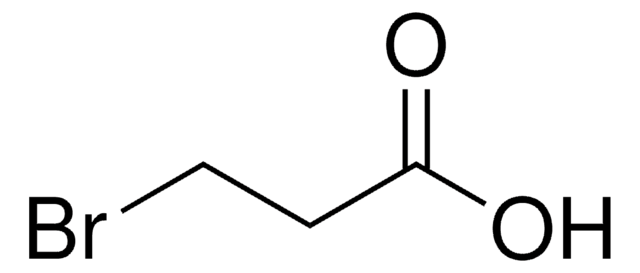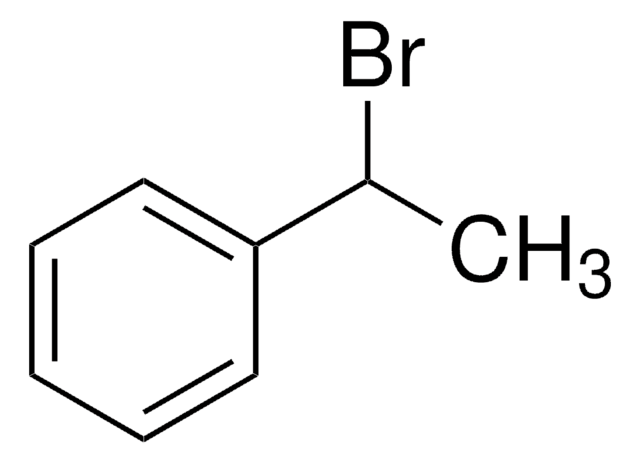308609
2-Bromopropionitrile
97%
Synonym(s):
α-Bromopropionitrile, (±)-2-Bromopropionitrile, 2-Bromopropanenitrile
Sign Into View Organizational & Contract Pricing
All Photos(1)
About This Item
Linear Formula:
CH3CH(Br)CN
CAS Number:
Molecular Weight:
133.97
MDL number:
UNSPSC Code:
12352100
PubChem Substance ID:
NACRES:
NA.22
Recommended Products
Assay
97%
form
liquid
impurities
<3% 2-bromopropionamide
refractive index
n20/D 1.461 (lit.)
bp
68-69 °C/50 mmHg (lit.)
density
1.55 g/mL at 25 °C (lit.)
functional group
bromo
SMILES string
CC(Br)C#N
InChI
1S/C3H4BrN/c1-3(4)2-5/h3H,1H3
InChI key
PYNYHMRMZOGVML-UHFFFAOYSA-N
Application
2-Bromopropionitrile was used as an initiator in the atom transfer radical polymerization using activators generated by electron transfer (AGET ATRP) of acrylonitrile and the reaction was catalysed by Yb-based catalyst.
Signal Word
Warning
Hazard Statements
Precautionary Statements
Hazard Classifications
Acute Tox. 4 Oral - Eye Irrit. 2 - Flam. Liq. 3 - Skin Irrit. 2 - STOT SE 3
Target Organs
Respiratory system
Storage Class Code
3 - Flammable liquids
WGK
WGK 3
Flash Point(F)
136.4 °F - closed cup
Flash Point(C)
58 °C - closed cup
Personal Protective Equipment
dust mask type N95 (US), Eyeshields, Gloves
Choose from one of the most recent versions:
Already Own This Product?
Find documentation for the products that you have recently purchased in the Document Library.
Customers Also Viewed
Jing Ma et al.
Materials science & engineering. C, Materials for biological applications, 32(6), 1699-1703 (2012-08-01)
Yb-based catalyst was used for the first time for atom transfer radical polymerization using activators generated by electron transfer (AGET ATRP) of acrylonitrile (AN) with 2-bromopropionitrile (BPN) as initiator, 2, 2'-bipyridine (bipy) as ligand, and tisn(II) bis(2-ethylhexanoate) (Sn(EH)2) as reducing
Breanne E Holmes et al.
Chemosphere, 187, 114-122 (2017-08-27)
The formation of disinfection by-products (DBPs) in drinking water occurs when chemical disinfectants such as chlorine and chloramine react with natural organic matter and anthropogenic pollutants. Some DBPs have been linked to bladder cancer and infertility; however, the underlying mechanism
Breanne E Holmes et al.
Environmental toxicology and chemistry, 38(5), 956-964 (2019-01-31)
Disinfection byproducts are formed during most drinking water treatment and presently number >800, some of which are implicated in human health outcomes including bladder cancer and infertility, with unknown mechanisms of action. In particular, it is not yet understood whether
Our team of scientists has experience in all areas of research including Life Science, Material Science, Chemical Synthesis, Chromatography, Analytical and many others.
Contact Technical Service















